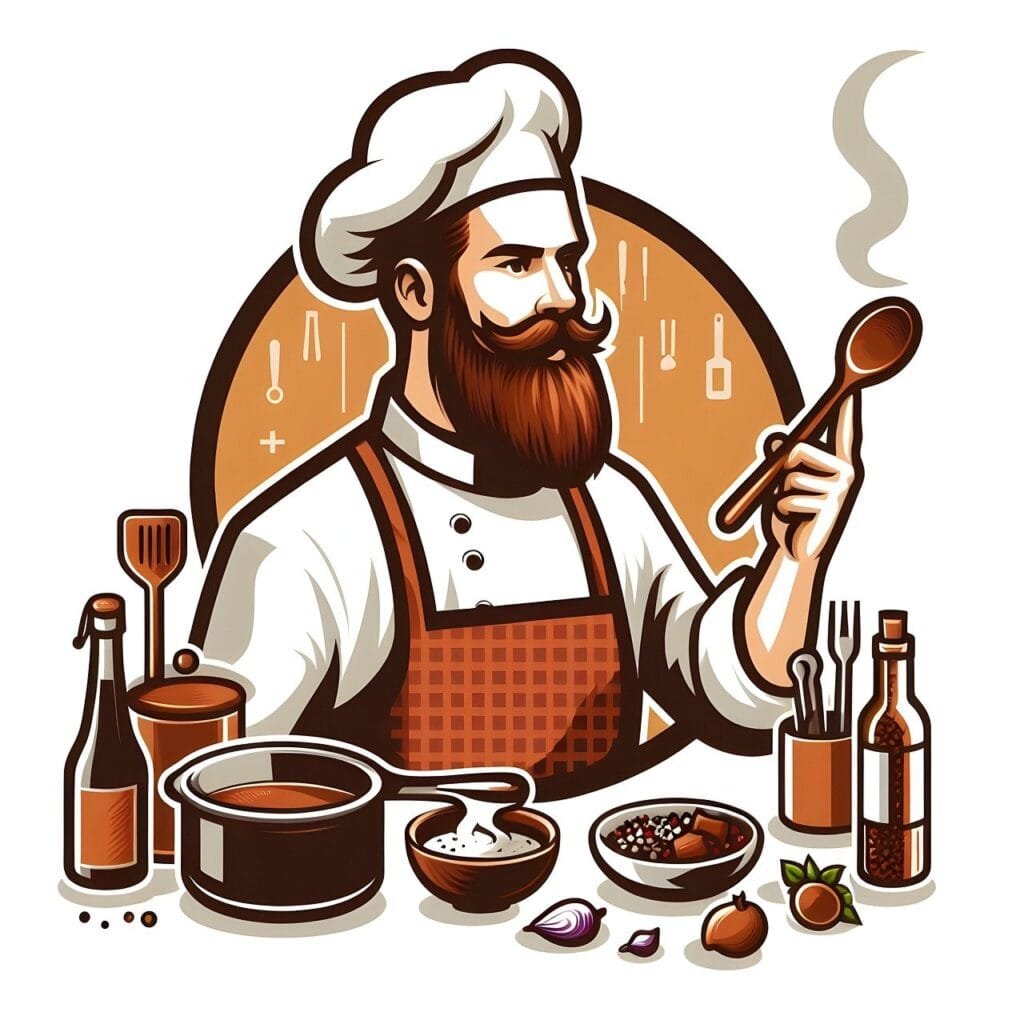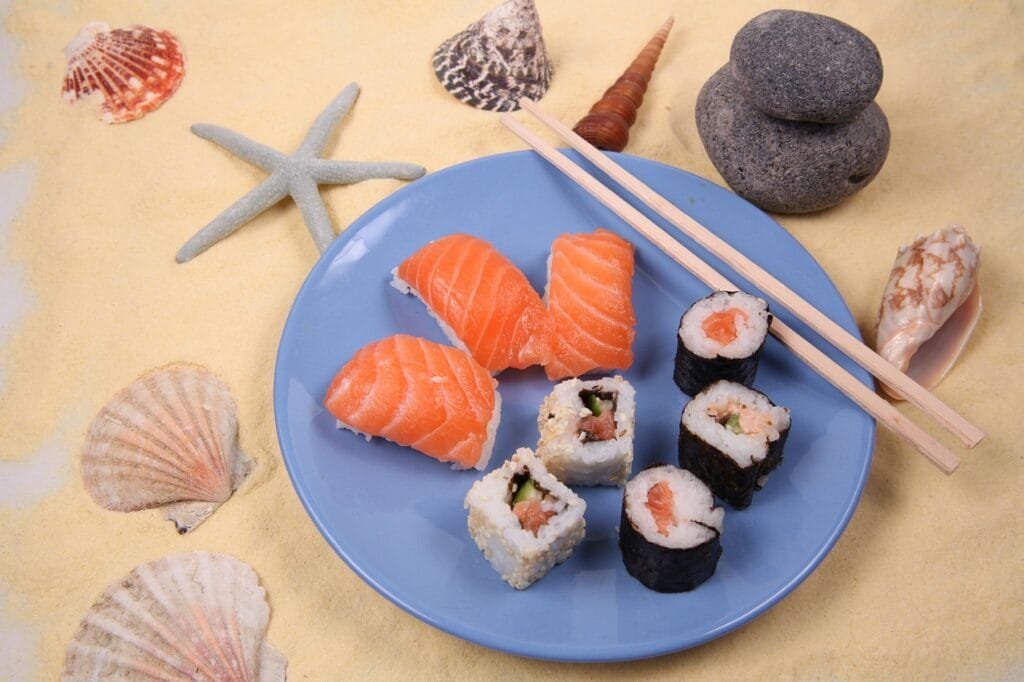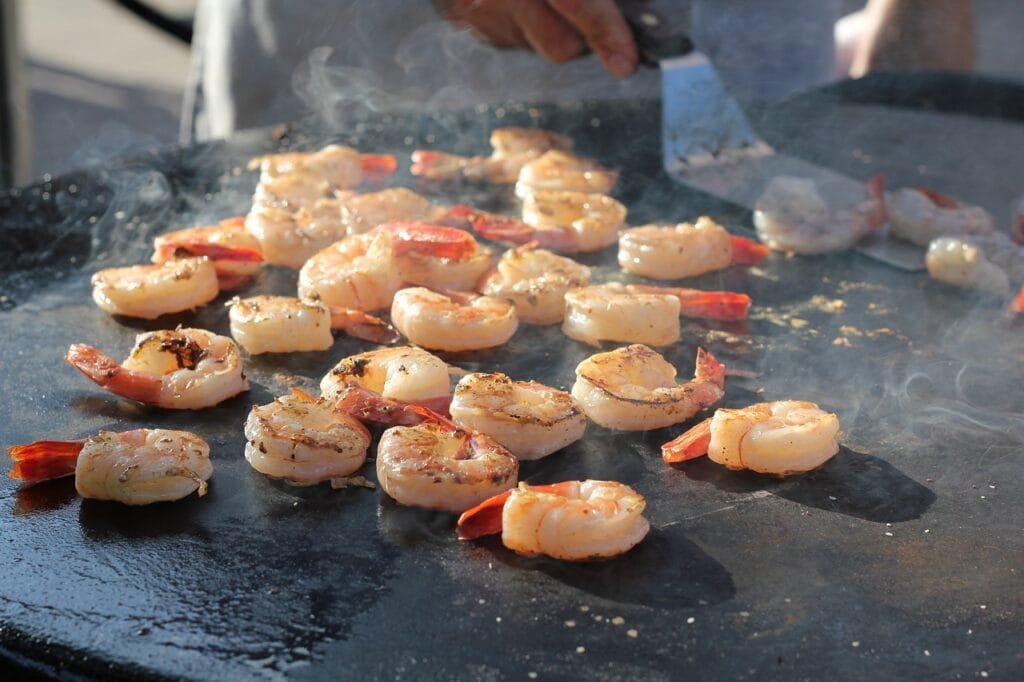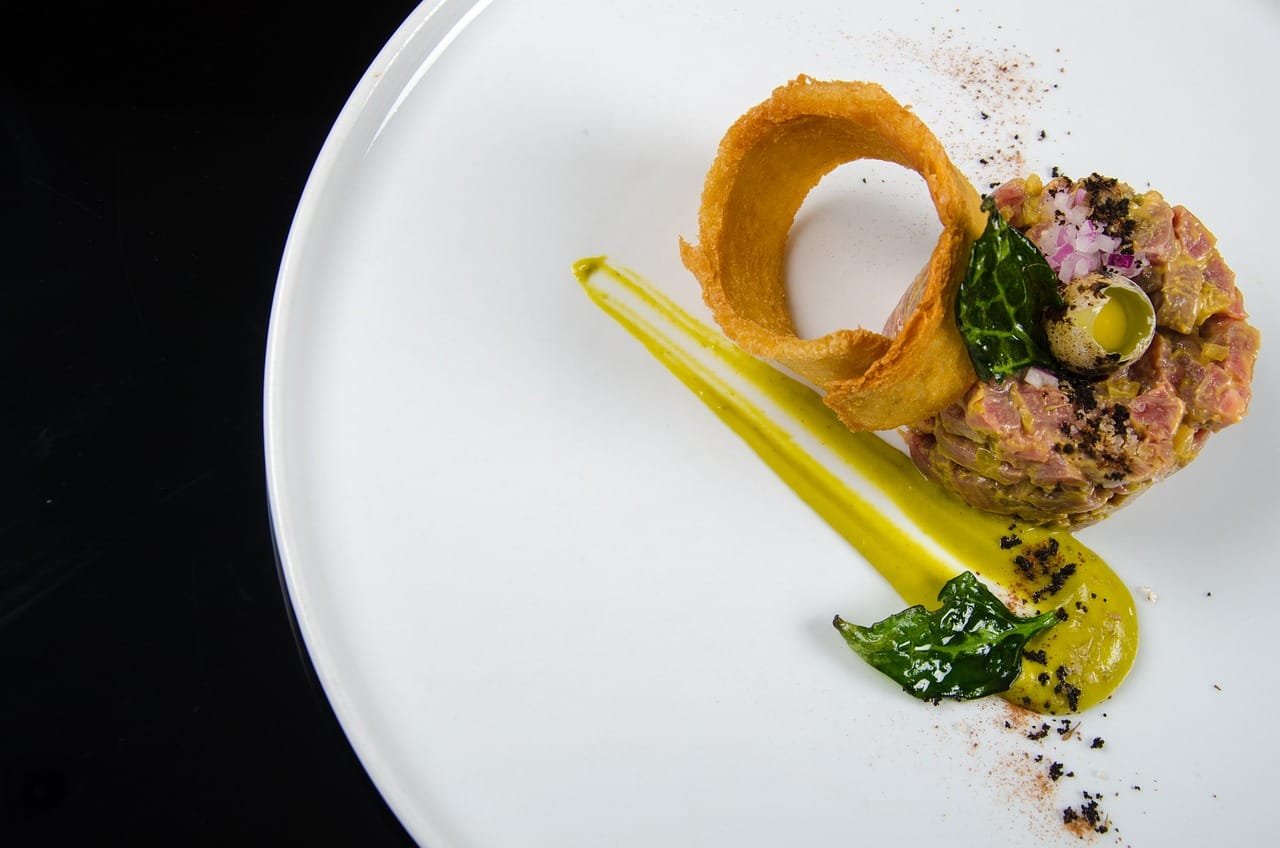This Article has been revised, edited and added to, by Poulomi Chakraborty.
- Deepening the Understanding of Culinary Tourism
- Crafting Unique Culinary Narratives
- Mastering Keyword Strategy for Culinary Tourism
- Implementing Keywords Across Your Digital Presence
- Evaluating and Evolving Your Keyword Strategy
- Elevating Content Strategy in Culinary Tourism
- Tailoring Content to Audience Segments
- Optimizing Content for Discoverability and Engagement
- Harnessing the Power of Visual SEO
- Integrating Multimedia Content for Enhanced Engagement
- Utilizing Social Media as a Visual SEO Tool
- Mastering Local SEO for Culinary Tourism Success
- Leveraging Local Content to Connect with Your Audience
- Engaging with the Local Community Online and Offline
- Encouraging and Managing Customer Reviews
- Elevating Your Culinary Brand Through Strategic Link-Building
- Harnessing the Power of Guest Blogging
- Participating in Culinary and Travel Forums and Communities
- Leveraging Local and Culinary Events for Link-Building
- Cultivating a Flavorful Social Media Presence
- Engaging With Your Culinary Community
- Utilizing Social Media for SEO Enhancement
- Conclusion: A Culinary Journey in the Digital Landscape
Culinary tourism, at its core, is a journey of the senses. With every bite and sip, travelers are transported, tasting the culture, history, and spirit of their chosen destination. For many, the appeal of a new locale isn’t just in its sights and sounds, but in its flavors, scents, and culinary traditions. As more and more adventurers seek out unique dining experiences and gastronomic delights, culinary tourism has surged in popularity. Yet, as with any travel niche, ensuring that your culinary business stands out in the digital realm is essential. This is where the art of SEO – Search Engine Optimization – becomes the chef’s best tool.
By understanding and harnessing the power of SEO tailored for culinary tourism, businesses can attract a global clientele hungry for authentic and memorable culinary experiences. Let’s embark on a flavorful journey to unravel the best SEO strategies for culinary tourism.
Deepening the Understanding of Culinary Tourism

Culinary tourism, often perceived as the pursuit of unique eating and drinking experiences, transcends mere dining to embody the essence of a culture’s gastronomic identity. For startups in this space, the journey begins with an in-depth understanding of this concept, paving the way to tailor unique experiences that resonate with the cultural narrative of the destination.
Embracing the Cultural Tapestry
At the heart of culinary tourism is the cultural tapestry that weaves together the flavors of a region. Founders must delve into the historical, geographical, and societal influences that shape local cuisines. This deep dive not only enriches the offerings but also positions the startup as a curator of authentic experiences, differentiating it in a competitive market. Engaging with local historians, chefs, and food artisans can unveil hidden gems and stories that add depth to your culinary tours or experiences.
Innovating Culinary Experiences
Innovation is key to capturing the imagination and taste buds of the modern traveler. Culinary startups should look beyond traditional dining setups to offer immersive experiences. Think of chef-led market tours, farm-to-table experiences, or even interactive cooking sessions that blend cultural storytelling with culinary education. Each offering should aim to create a personal connection with the food and its origins, making the experience memorable and shareable.
Crafting Unique Culinary Narratives

To truly stand out, it’s essential for startups to craft unique culinary narratives that speak to the soul of the traveler. This involves a meticulous selection of experiences that tell a story, be it the journey of a local ingredient from farm to plate or the evolution of a regional dish. By focusing on storytelling, startups can elevate their marketing efforts, engaging potential customers through the allure of discovery and learning.
Leveraging Technology for Immersive Storytelling
Utilizing virtual and augmented reality technologies can offer potential guests a taste of what’s to come. Through immersive storytelling techniques, startups can transport users to vineyards, kitchens, and street food markets, creating anticipation and excitement for the actual experience. Additionally, leveraging social media platforms to share these stories and experiences helps in building a community of culinary enthusiasts eager to explore your offerings.
Strategic Collaborations for Enhanced Reach
Building strategic partnerships with local communities, food bloggers, and influencers can amplify your brand’s visibility and authenticity. Collaborations can range from co-hosted events to sponsored content that showcases the uniqueness of your culinary experiences. These partnerships not only extend your reach but also embed your brand within the local culinary scene, enhancing credibility and attraction.
Elevating Culinary Tourism Through Innovation and Storytelling
As startups venture into the world of culinary tourism, the path to success lies in embracing the cultural roots of cuisine while innovating to meet the desires of the modern traveler. By deepening the understanding of culinary tourism, crafting unique narratives, and leveraging technology and collaborations, startups can offer unparalleled experiences that capture the essence of their destinations. In doing so, they not only contribute to the preservation and celebration of culinary heritage but also carve a niche for themselves in the vibrant tapestry of culinary tourism.
Mastering Keyword Strategy for Culinary Tourism
In the bustling marketplace of culinary tourism, the right keywords act as the beacon that guides potential clients to your offerings. For startups, mastering the art of keyword selection and application is not just about visibility; it’s about connecting with a target audience that is actively seeking the unique experiences you provide.
Understanding the Culinary Traveler’s Search Intent
The first step in a refined keyword strategy is understanding the search intent of your prospective culinary travelers. People explore the internet for culinary travel ideas, not just with the intent to book but to dream, plan, and inspire their next gastronomic adventure. Identifying the stages of their journey—from initial inspiration to final booking—allows you to tailor your keyword strategy to meet them at each point of their search.
Crafting a Rich Keyword Palette
A rich keyword palette is essential for capturing the variety and depth of searches potential clients might use. This palette extends beyond generic terms like “food tours” or “cooking classes” to more nuanced and location-specific phrases. For example, “farm-to-table dining experience in Tuscany” or “authentic street food tours in Bangkok” offer a targeted approach that matches specific search queries. This specificity not only improves search engine rankings but also aligns your offerings with the desires of searchers looking for unique culinary experiences.
Implementing Keywords Across Your Digital Presence
Once you’ve identified a robust set of keywords, the next step is to weave them seamlessly across your digital presence. This integration goes beyond simply sprinkling keywords into content; it involves a strategic placement that enhances user experience and search engine visibility.
Crafting Keyword-Rich Content That Tells a Story
Your website’s content should not only be informative but also engaging and rich with the keywords your audience is searching for. From blog posts detailing the origins of specific dishes to pages that highlight the unique aspects of your culinary tours, each piece of content should tell a part of your brand’s story. Incorporating keywords naturally into these narratives helps search engines understand and rank your content, making it more likely to be discovered by your target audience.
Beyond the Website: Keywords in the Digital Ecosystem
In today’s digital ecosystem, your online presence extends far beyond your website. Social media profiles, online directories, and review platforms are all touchpoints where your chosen keywords should be consistently applied. For instance, your Instagram posts can include hashtags that are variations of your keywords, while your business listings on Google My Business and TripAdvisor should be optimized with descriptions that highlight your unique offerings using targeted keywords.
Evaluating and Evolving Your Keyword Strategy
The digital landscape and search engine algorithms are in constant flux, which means your keyword strategy should be dynamic and adaptable. Regularly reviewing the performance of your keywords through analytics tools can provide insights into which terms are driving traffic and conversions, and which may need to be tweaked or replaced.
Leveraging Analytics for Insightful Adjustments
Utilizing tools like Google Analytics and Google Search Console can give you a clear picture of how visitors are finding your site and interacting with your content. These insights allow you to refine your keyword strategy, focusing on high-performing keywords and exploring new opportunities based on user search trends.
Keywords as the Foundation of Your SEO Strategy
In the competitive realm of culinary tourism, a well-crafted keyword strategy is the foundation upon which successful SEO efforts are built. By understanding the search intent of your audience, crafting a rich keyword palette, and strategically implementing these keywords across your digital presence, you can significantly enhance your visibility and attract more engaged visitors. Remember, the goal is not just to drive traffic but to connect with an audience that is as passionate about culinary exploration as you are. Regular evaluation and adaptation of your keyword strategy ensure that your offerings remain visible and appealing in the ever-evolving digital landscape.
Elevating Content Strategy in Culinary Tourism

In the competitive landscape of culinary tourism, content is not just king; it’s the entire kingdom. A strategic approach to crafting content that captivates and engages your audience is crucial. It’s about creating a feast for the eyes and mind that not only informs but also inspires and excites potential travelers.
Storytelling That Whets the Appetite
The essence of engaging content in culinary tourism lies in storytelling. Your content should do more than just describe; it should transport readers to your destination and let them taste, smell, and feel the experience through your words. Incorporating narratives that detail the journey of a dish from its origins to the plate, the passion of local chefs, or the history of a region’s cuisine can create a powerful emotional connection with your audience.
Immersive Visual and Written Narratives
Pairing compelling stories with stunning visuals is a strategy that can dramatically enhance the appeal of your content. High-resolution images, captivating videos, and interactive media such as virtual tours can complement your written content, making it more engaging. Leveraging these elements to tell a story ensures that your audience is not just passively consuming information but is being actively drawn into the experience you’re offering.
Tailoring Content to Audience Segments
Understanding that your audience is not monolithic is key to crafting content that resonates. Different segments of your audience will have different interests, from gourmet dining to street food adventures, from cooking classes to winery tours. Creating tailored content that speaks directly to these interests can significantly increase engagement and conversion rates.
Personalization and Segmentation
Utilizing data and insights gleaned from your website analytics and social media interactions can help in segmenting your audience based on their preferences and behaviors. Personalizing content for these segments, whether through targeted blog posts, email marketing campaigns, or social media content, can make your audience feel understood and valued, fostering loyalty and advocacy.
Optimizing Content for Discoverability and Engagement
While creating engaging content is vital, ensuring it reaches your target audience is equally important. SEO optimization, social media sharing, and email marketing are tools that can increase the visibility and impact of your content.
SEO Optimization for Maximum Visibility
Incorporating targeted keywords into your content in a way that feels natural and enhances the readability is an art. Beyond just inserting keywords, optimizing headings, meta descriptions, and even image alt texts can significantly boost your content’s discoverability on search engines. Additionally, creating content that answers common questions related to culinary tourism can help your website become a go-to resource, increasing its authority and ranking.
Leveraging Social Media and Email Marketing
Social media platforms offer a unique opportunity to share your content with a broader audience and engage with potential travelers in real-time. Tailoring content to fit the strengths of each platform, from captivating images on Instagram to insightful articles shared on LinkedIn, can maximize engagement. Similarly, email marketing allows for direct communication with your audience, providing them with curated content that matches their interests and encourages them to explore further.
Crafting Content That Connects and Converts
In the digital age, where the competition for attention is fierce, crafting content that stands out is critical for success in culinary tourism. By focusing on storytelling, personalization, and strategic distribution, startups can create content that not only attracts but also deeply engages their target audience. This approach not only serves to showcase the unique offerings of a culinary tourism business but also builds a lasting relationship with an audience that shares a passion for culinary exploration. Remember, the goal is to create content that serves as a bridge between potential travelers and the unforgettable experiences waiting to be discovered.
Harnessing the Power of Visual SEO
 visual content to enhance your website’s visibility and engagement. This strategy is pivotal in attracting potential travelers, offering them a tantalizing glimpse into the experiences you offer.” class=”wp-image-42551″/>
visual content to enhance your website’s visibility and engagement. This strategy is pivotal in attracting potential travelers, offering them a tantalizing glimpse into the experiences you offer.” class=”wp-image-42551″/>In the visually driven world of culinary tourism, leveraging the power of imagery and multimedia is not just an option; it’s a necessity. Visual SEO refers to the optimization of visual content to enhance your website’s visibility and engagement. This strategy is pivotal in attracting potential travelers, offering them a tantalizing glimpse into the experiences you offer.
The Art of High-Quality Imagery
The cornerstone of visual SEO lies in the quality and relevance of the images you use. High-resolution, professionally taken photographs that capture the essence and allure of your culinary experiences are crucial. These images should tell a story, evoke emotions, and stimulate the senses, compelling viewers to delve deeper into your content.
Optimizing Images for SEO
Beyond aesthetics, the technical optimization of images plays a vital role in improving your website’s search engine rankings. This includes using descriptive, keyword-rich file names, optimizing alt attributes to accurately describe images, and ensuring images are correctly sized and compressed to reduce load times without sacrificing quality. Implementing these practices makes your images more discoverable via search engines and enhances the overall user experience on your website.
Integrating Multimedia Content for Enhanced Engagement
While static images capture moments, multimedia content such as videos and virtual tours offer dynamic and immersive experiences. This type of content can significantly increase engagement, keeping visitors on your site longer and encouraging them to explore further.
Creating Compelling Video Content
Videos are a powerful tool to showcase the vibrancy and dynamism of culinary experiences. From short, enticing clips highlighting local dishes to longer, detailed documentaries about the culture and tradition behind the cuisine, video content can provide an in-depth look at what guests can expect. Ensuring these videos are optimized for search through the use of descriptive titles, tags, and transcripts can greatly increase their visibility and impact.
Leveraging Virtual Tours
Virtual tours offer potential travelers a unique opportunity to explore destinations, cooking classes, or dining venues from the comfort of their homes. This immersive form of content not only enhances engagement but also significantly boosts the likelihood of conversions by providing an authentic taste of the experience. Optimizing virtual tours with keyword-rich descriptions and ensuring they are accessible across various devices can amplify their reach and effectiveness.
Utilizing Social Media as a Visual SEO Tool
Social media platforms are inherently visual and can play a critical role in amplifying your visual SEO efforts. Platforms like Instagram, Pinterest, and Facebook are ideal for sharing captivating images and videos, driving traffic to your website, and increasing brand visibility.
Strategic Sharing on Social Media
Creating shareable visual content for social media involves more than just posting appealing images or videos. It includes strategic planning around the timing of posts, the use of relevant hashtags, and engagement with followers. Sharing behind-the-scenes looks, culinary tips, and user-generated content can foster a sense of community and encourage further sharing, significantly extending the reach of your visual content.
A Visual Feast That Drives Engagement
Visual SEO is an indispensable component of a comprehensive SEO strategy for culinary tourism startups. By focusing on high-quality imagery, optimizing visual content for search engines, and effectively leveraging multimedia and social media, startups can captivate potential travelers’ senses and imagination. This not only enhances their online visibility but also sets the stage for deeper engagement and conversion, ultimately contributing to the success and growth of their culinary tourism business. Remember, in a realm where tastes and experiences are central, letting your visuals tell your story is key to attracting and engaging your audience.

Related: Check out our free SEO suite

Mastering Local SEO for Culinary Tourism Success
Local SEO is a powerful tool for culinary tourism startups looking to attract foodies to their unique experiences. It involves optimizing your online presence to appear in local search results, which is essential for businesses targeting tourists and locals alike. A strategic approach to local SEO not only improves visibility but also drives engagement and conversions by connecting with an audience actively searching for culinary adventures in specific locations.
Building a Strong Foundation with Google My Business
Your Google My Business (GMB) listing is the cornerstone of your local SEO strategy. A well-optimized GMB profile provides potential customers with essential information about your business, including location, hours of operation, contact information, and even menus or services offered.
Enhancing Your GMB Listing
To make the most of your GMB listing, ensure all information is up-to-date and complete. High-quality photos of your culinary experiences, customer reviews, and responses to queries further enrich your profile. Regularly updating your listing with new photos, events, or specials keeps your audience engaged and informed.
Leveraging Local Content to Connect with Your Audience
Creating content that resonates with a local audience can significantly enhance your local SEO efforts. This involves not just highlighting what you offer but also showcasing your knowledge and connection to the area’s culinary scene.
Crafting Content That Celebrates Local Cuisine
Develop blog posts, videos, and social media content that dive deep into the local culinary culture. Share stories about local chefs, food festivals, seasonal ingredients, or hidden dining gems. This type of content not only positions your brand as an authority on local cuisine but also improves your visibility in local search results.
Engaging with the Local Community Online and Offline

A strong local presence goes beyond online activities. Engaging with your community through local events, partnerships, and collaborations can drive offline word-of-mouth while bolstering your online local SEO efforts.
Building Partnerships with Local Businesses
Collaborating with local wineries, markets, and other food-related businesses can create mutually beneficial relationships. Co-hosting events or featuring each other on your websites and social media channels can boost local visibility and attract a wider audience to both businesses.
Encouraging and Managing Customer Reviews
Customer reviews are a critical component of local SEO and can significantly impact your business’s visibility and reputation. Positive reviews on your GMB listing and other review platforms like TripAdvisor and Yelp enhance your credibility and attract more customers.
Strategies for Generating Positive Reviews
Actively encourage satisfied customers to leave reviews by making the process as easy as possible. Whether through follow-up emails, QR codes on premises, or verbal reminders, a gentle nudge can lead to a wealth of positive feedback. Monitoring and responding to reviews, whether positive or negative, shows potential customers that you value feedback and are committed to customer satisfaction.
A Local SEO Strategy That Delivers Results
For culinary tourism startups, a robust local SEO strategy is not just about being found; it’s about creating meaningful connections with foodies who are eager to explore local flavors and experiences. By optimizing your Google My Business listing, creating content that celebrates local cuisine, engaging with the community, and managing customer reviews, you can enhance your visibility and attract more customers to your doorstep. Remember, in the world of culinary tourism, a strong local presence is key to capturing the hearts and palates of travelers and locals alike.
Elevating Your Culinary Brand Through Strategic Link-Building
In the realm of SEO, link-building serves as a pivotal strategy to boost your website’s credibility and search engine ranking. For culinary tourism startups, acquiring high-quality backlinks is akin to earning digital endorsements from respected peers and authorities in the field. This section outlines how to harness the power of link-building to elevate your brand’s online presence and authority.
Cultivating Relationships with Culinary and Travel Influencers
Engaging with influencers who share a passion for travel and gastronomy can be a game-changer for your link-building efforts. Collaborations can range from guest blog posts to social media features, providing your brand with valuable backlinks and exposure to a broader audience.
Crafting Collaborative Content
When approaching influencers for collaborations, propose unique content ideas that align with their interests and audience. For instance, an influencer focusing on sustainable travel might be interested in featuring your farm-to-table culinary tour. Such collaborations not only result in valuable backlinks but also enhance your brand’s visibility and reputation within the niche.
Harnessing the Power of Guest Blogging
Guest blogging on reputable culinary and travel websites is another effective strategy for building quality backlinks. By contributing insightful and engaging content to other platforms, you not only establish your expertise but also attract backlinks that improve your site’s SEO.
Selecting the Right Platforms
Identify platforms that share a similar target audience but are not direct competitors. Look for websites with high domain authority to ensure the backlinks you acquire carry significant weight. Before proposing a guest post, familiarize yourself with the content and style of the platform to tailor your pitch effectively.
Participating in Culinary and Travel Forums and Communities

Active participation in online forums and communities related to culinary tourism can also contribute to your link-building strategy. By providing valuable insights and information, you can establish your brand as a knowledgeable authority in the field.
Engaging Authentically
When engaging in forums, focus on providing genuine help and insights rather than overtly promoting your brand. Use the opportunity to share relevant content from your website when it adds value to the discussion. This approach not only fosters trust but also encourages organic backlinking from community members who find your contributions valuable.
Leveraging Local and Culinary Events for Link-Building
Participation in local and culinary events offers a multifaceted opportunity for link-building. From event sponsorships to hosting your own culinary experiences, these activities can generate backlinks through event listings, press releases, and coverage by local and niche media.
Maximizing Event Participation for SEO
Ensure your participation or sponsorship of events is prominently featured on your website and shared across social media channels. Reach out to event organizers for inclusion in their online promotional materials, and consider issuing press releases to local media and culinary blogs to maximize your event’s visibility and link-building potential.
Crafting a Link-Building Strategy That Nourishes Your Brand
For culinary tourism startups, a strategic approach to link-building is essential for nourishing your brand’s online presence and authority. By engaging with influencers, contributing to reputable platforms, participating in relevant forums, and leveraging events, you can build a network of quality backlinks that enhances your SEO. This not only improves your visibility in search engine results but also establishes your brand as a trusted authority in the culinary tourism industry. Remember, effective link-building is about quality over quantity, focusing on meaningful connections that align with your brand values and audience interests.
Cultivating a Flavorful Social Media Presence
In the vibrant world of culinary tourism, social media platforms offer a unique canvas to paint your brand’s story, connect with your audience, and drive engagement that boosts your SEO efforts. Developing a strategic approach to social media involves more than just regular posts; it requires a thoughtful blend of content, engagement, and promotion strategies that resonate with your target audience.
Crafting a Compelling Brand Narrative
Your social media channels are the perfect stage to tell your brand’s story. Whether it’s the journey of a dish from local farms to the dinner table, the behind-the-scenes look at a cooking class, or the cultural stories behind a regional cuisine, your narrative should captivate and engage your audience. This storytelling not only fosters a deeper connection with your followers but also encourages sharing, which can increase your visibility and backlink opportunities.
Emphasizing Visual Storytelling
Given the inherently visual appeal of food and travel, your social media strategy should leverage high-quality photos and videos to tell your story. Use platforms like Instagram and Pinterest to showcase your culinary experiences with stunning imagery and engaging captions that invite followers to imagine themselves enjoying your tours or classes.
Engaging With Your Culinary Community
Engagement is key to a successful social media strategy. It’s not enough to post content; you need to interact with your followers, respond to comments, and participate in broader conversations within the culinary tourism community.
Fostering Conversations Around Cuisine
Pose questions, run polls, and encourage user-generated content through contests or hashtags related to your culinary experiences. This not only boosts engagement but also provides you with valuable content and insights into your audience’s preferences.
Collaborating with Food Influencers and Bloggers
Partner with influencers and bloggers who share your passion for culinary tourism. These collaborations can introduce your brand to a wider audience, generate content, and create backlinks to your website. Choose partners whose followers align with your target demographic to ensure the partnership is mutually beneficial.
Utilizing Social Media for SEO Enhancement
While social media doesn’t directly influence SEO rankings, the engagement and traffic generated from these platforms can indirectly boost your SEO. By integrating your social media strategy with your SEO efforts, you can maximize your online visibility.
Sharing Keyword-Rich Content
Incorporate relevant keywords into your social media posts, especially on platforms like YouTube where search is a significant feature. This can help your content be discovered by users searching for culinary experiences or travel tips.
Driving Traffic to Your Website
Use social media to direct followers to your website, whether through link-in-bio features, swipe-up stories (where available), or direct links in post captions. This not only increases website traffic but also supports your overall SEO strategy by signaling to search engines that your content is valuable and relevant.
Serving Up a Social Media Strategy That Delights and Engages
A well-crafted social media strategy is essential for culinary tourism startups looking to enhance their digital presence and SEO. By focusing on compelling storytelling, community engagement, and strategic content promotion, startups can create a dynamic social media presence that captivates their audience, encourages sharing, and ultimately drives traffic and conversions. Remember, the goal is to create a social media experience that is as rich and engaging as the culinary experiences you offer, encouraging followers to not just observe but actively participate in your brand’s journey.
Conclusion: A Culinary Journey in the Digital Landscape
In the vast world of travel, culinary tourism shines bright, promising a delectable blend of tastes, tales, and traditions. Yet, as the world becomes increasingly digital, the aroma of dishes and the tales behind them need to waft through the screens of potential travelers, urging them to embark on a gastronomic adventure. This is where SEO steps in, acting as the bridge between age-old culinary treasures and the modern digital traveler.
The right SEO strategies for culinary tourism are much like the perfect recipe: a dash of engaging content, a sprinkle of high-quality visuals, a hint of link-building, all seasoned with continuous learning and adaptation. When done right, it can transform your digital space into a bustling marketplace of global gourmet enthusiasts eager to book the next flight and savor what you have to offer.
In conclusion, as the lines between gastronomy and technology blur, businesses in culinary tourism must recognize the unparalleled power of SEO. By embracing these strategies, one can ensure that the stories, flavors, and experiences they offer are savored not just on the plate but across the digital universe.
Read Next



















